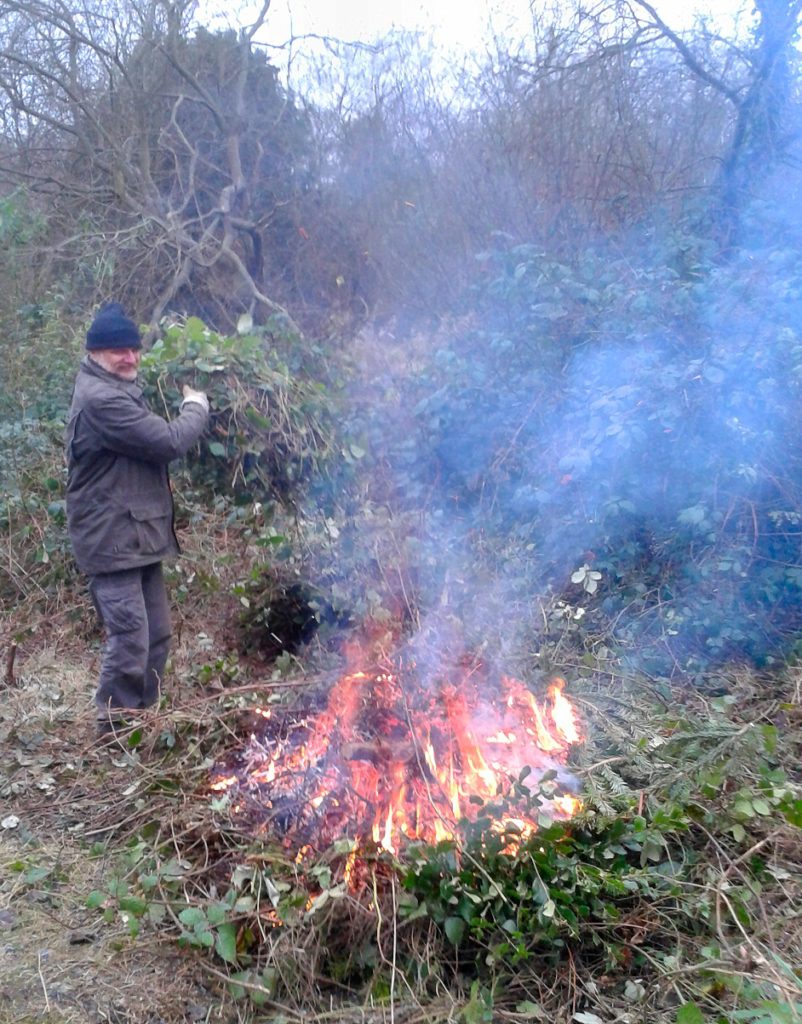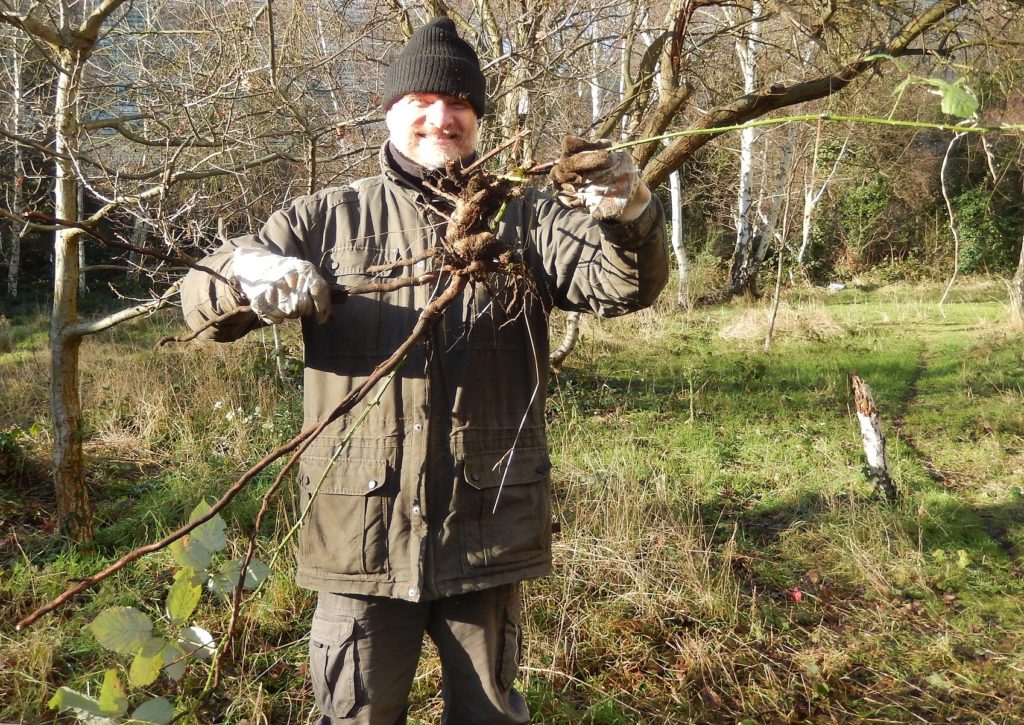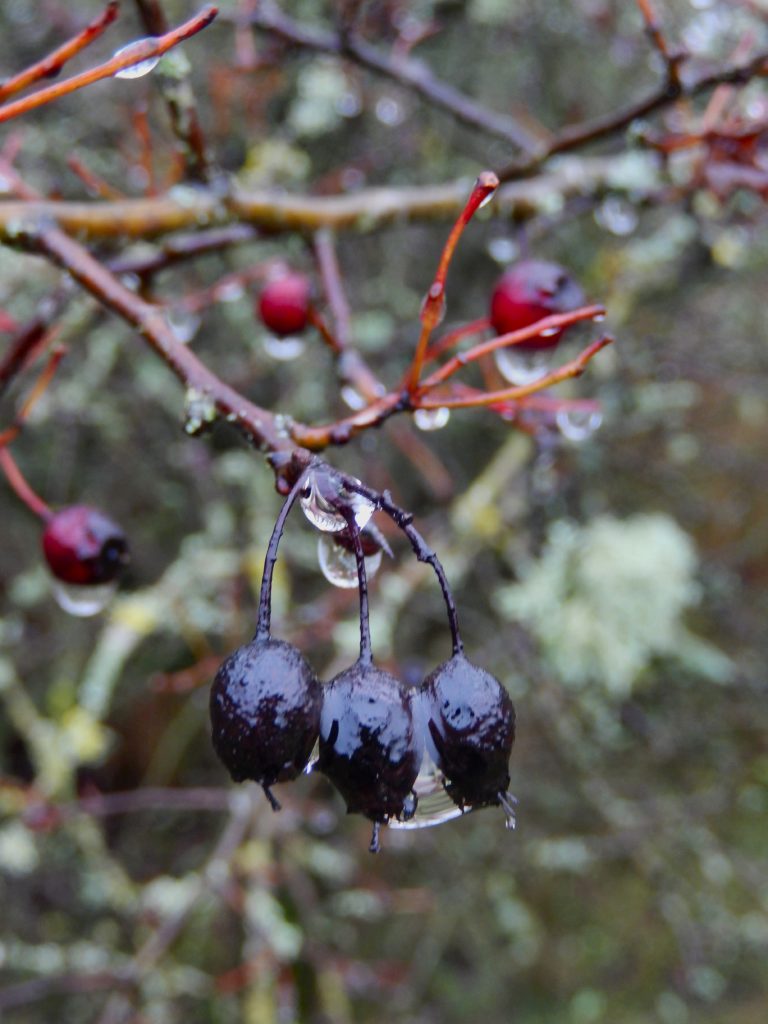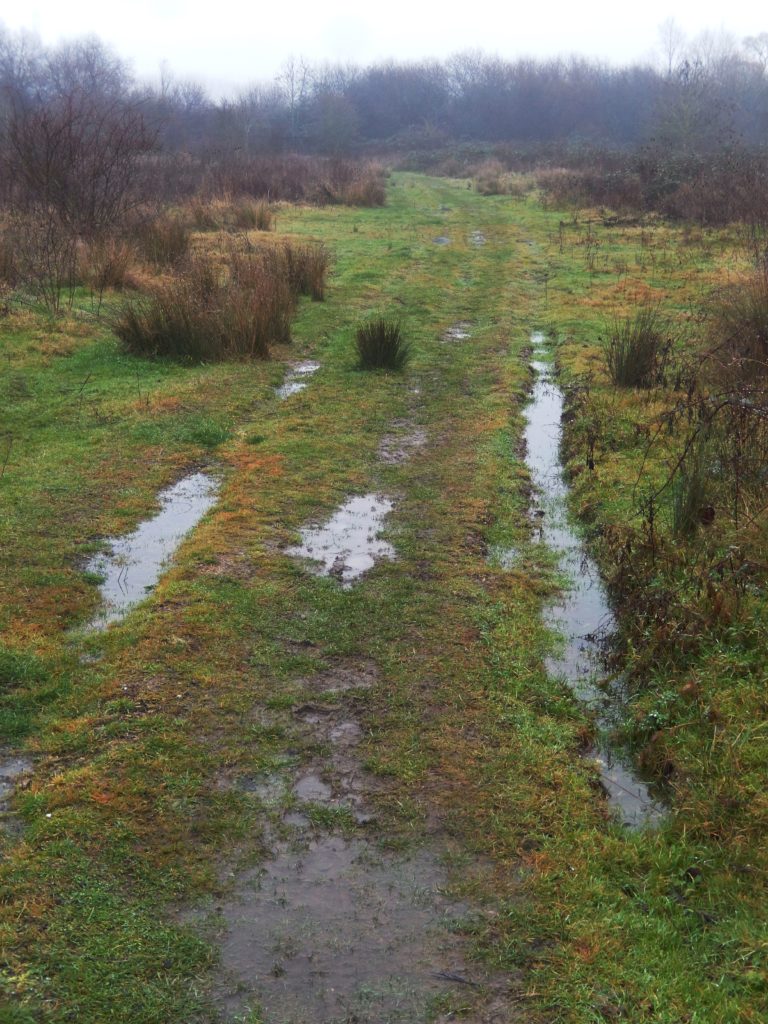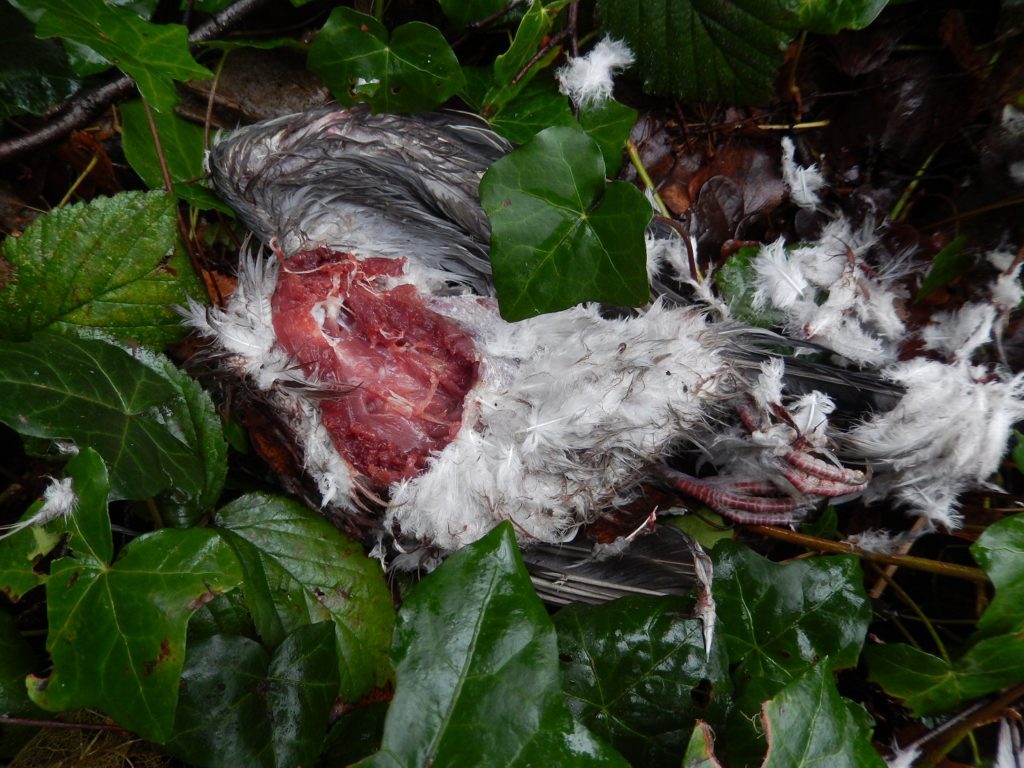
Many of the photos on this website show nature at its prettiest. Well, not today, but still surely of interest. Nature is in Alfred, Lord Tennyson’s phrase “red in tooth and claw”—or in this case in beak and claw: a Wood Pigeon killed, plucked and partly eaten by a Sparrowhawk. There were many plucked feathers all about, mainly to the right and bottom of the image, an instantly recognisable scene of predation and carnage. The Sparrowhawks nest at the other end of the reserve, and they kill a pigeon somewhere that we notice most weeks. Netty disturbed this one on her walk round this morning, and given the cold damp weather she was surely the first person into the reserve today. The sparrowhawk, definitely not very large and brownish, was either a male or a juvenile.

